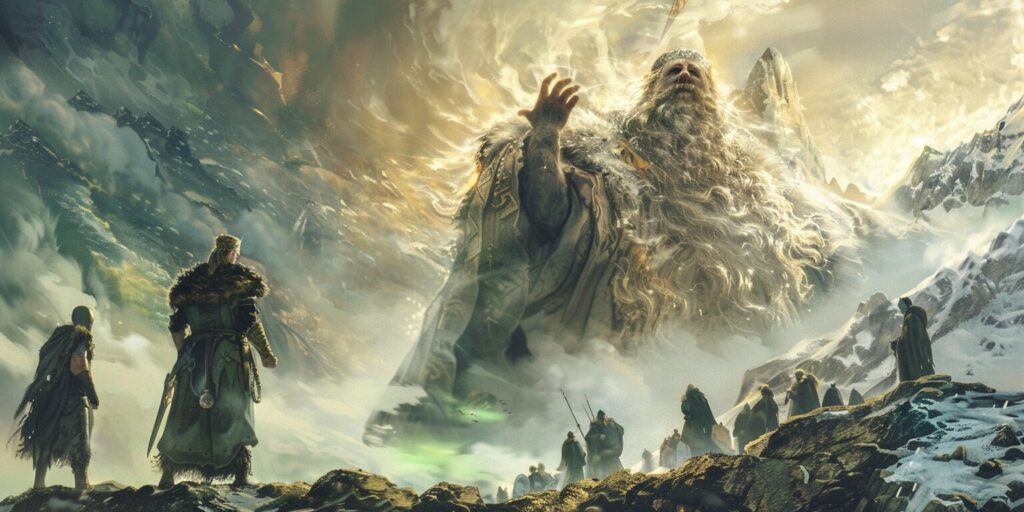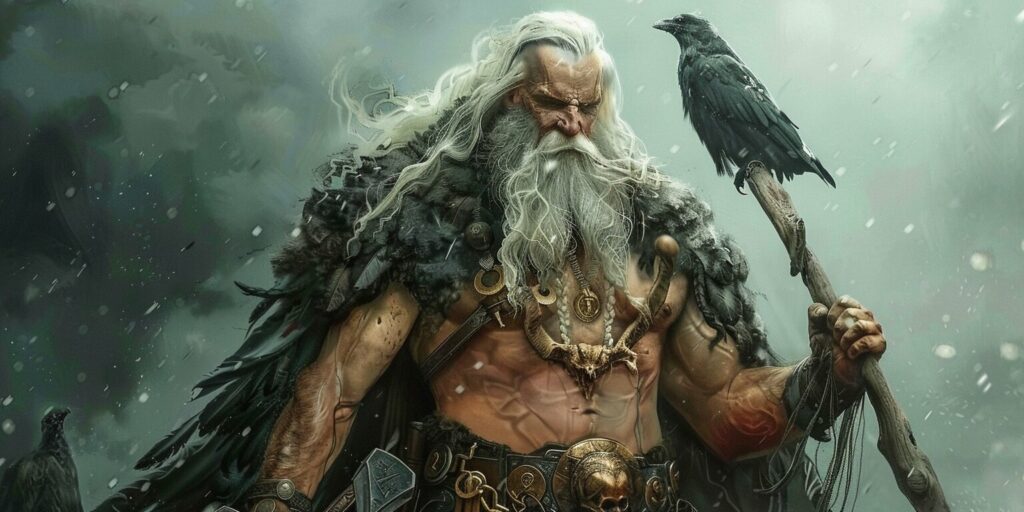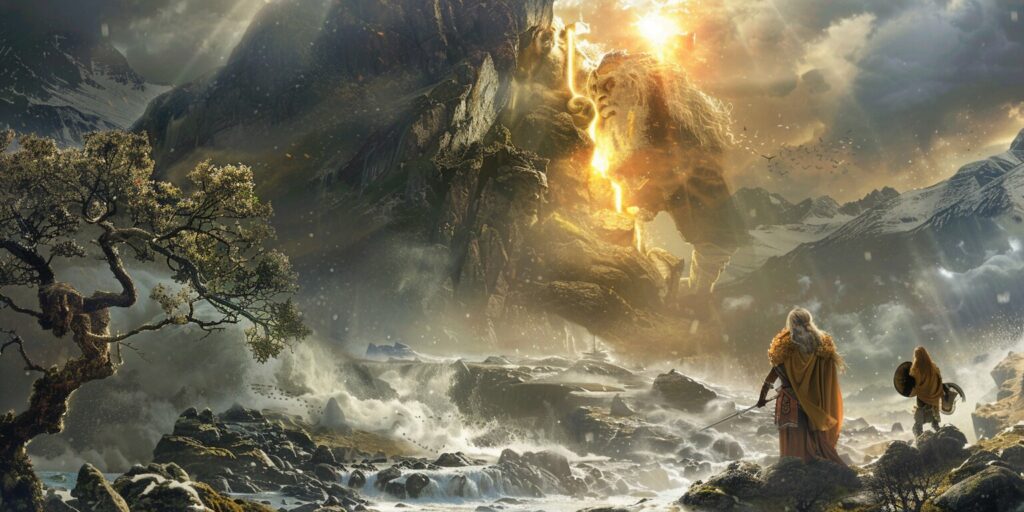Ask and Embla, Ginnungagap, Norse Mythology, Odin, Vili and Ve, Ymir
Origins of Mankind: The Creation of Humans in Norse Lore
Introduction
Norse mythology, a rich and intricate system of beliefs held by the ancient Scandinavians, offers a fascinating lens through which to explore human origins. Unlike the linear and often monotheistic narratives of the Abrahamic faiths, Norse mythology presents a universe teeming with gods, giants, and mysteries, with the creation of humans being a central theme. This article delves into the Norse creation myth, focusing on the first humans—Askr and Embla—and their significance in the broader context of Norse cosmogony, as described in the Prose Edda. By exploring these ancient narratives, we can gain insights into the values, beliefs, and existential queries of the Norse people, as preserved in the Old Norse Eddas.
What Is The Significance Of Norse Mythology In Understanding Human Origins?
Norse mythology is more than just a collection of stories; it is a reflection of the fears, hopes, and values of the Norse society. In understanding human origins, Norse mythology provides unique perspectives on the role of the divine and humanity’s place in the cosmos. These myths do not just explain physical existence but also impart moral and spiritual knowledge, influencing the cultural and social structures of Norse society, with texts like the Edda serving as a key source.
Delving Into The Roots Of Norse Mythology
Norse mythology is primarily preserved in the Icelandic Eddas and sagas, written in the 13th century but based on older oral traditions. Central to these myths is the cosmological narrative involving realms like Midgard, Asgard, and Ymir, the primordial giant. Understanding these myths requires an exploration of these ancient texts, where the cosmos is depicted not merely as a physical space but as a dynamic entity with the divine and the mundane in constant interaction.
Exploring The Creation Myth In Norse Lore
The Norse creation myth begins in Ginnungagap, a void between Niflheim (the land of ice) and Muspelheim (the land of fire). Ymir, the first being and a giant, emerged from the clash of these elemental worlds. The creation of the world—and subsequently humans—stems from his slaying by Odin and his brothers, Vili and Vé, who fashioned the world from his body, as recounted in the Prose Edda.
Understanding The Role Of Ask And Embla In The Norse Creation Story
Ask and Embla are central to the Norse creation story, representing the first humans in Norse mythology. According to the myth, Odin and his brothers found two pieces of driftwood on a seashore and breathed life into them, creating Askr (from an ash tree) and Embla (from an elm tree), the first two humans. But why were humans created in Norse mythology? This act symbolizes the transformation of the inanimate into the animate, emphasizing themes of life, consciousness, and potential.
Who Were The First Humans According To Norse Mythology?
In Norse mythology, the first humans were Ask and Embla, created uniquely by the gods’ divine intervention. Unlike other myths where humans are often created en masse, the creation of Ask and Embla highlights individuality and the divine spark within each human.

Unveiling The Identities Of Embla And Ask In Norse Mythology
Embla and Ask are more than just the first humans in Norse mythology; they are symbolic progenitors of human qualities. Embla, often associated with the elm tree, symbolizes resilience and life, whereas Askr, associated with the ash tree, is seen as a symbol of strength and connection between heaven and earth, narratives detailed in the Eddic literature.
Analyzing The Involvement Of Odin In The Creation Of The First Humans
Odin’s role in the creation of Askr and Embla is profound, demonstrating his importance not just as a war god but as a god of wisdom and life, themes explored in both the Prose and Poetic Eddas. By giving breath to Ask and Embla, Odin imbues them with spirit and life, highlighting his role as a progenitor and shaper of human destiny.
Comparing The Creation Of Embla And Ask To Other World Myths
Comparing Norse tales to other creation myths, such as those from Greek, Hindu, or Christian traditions, reveals distinct perspectives on human origins. Unlike the often solitary acts of creation seen in other cultures, the Norse narrative emphasizes collaboration among multiple gods, reflecting a culture that values communal effort and honor.
How Do The Norse Myths Portray The Creation Of Humans?
Norse myths portray human creation as an intentional and sacred act, reflecting the intricate relationship between humans and the divine. They are deeply rooted in Old Norse culture and are documented in works like the Poetic Edda. Humans are not merely created but endowed with qualities reflecting their creators’ intentions, emphasizing a shared essence between humanity and the divine.
Examining The Role Of Ymir In Norse Cosmogony
Ymir’s role in Norse cosmogony is crucial, as his body forms the material world. This connection between the giant’s body and the cosmos reflects the Norse belief in the interconnectedness of all life, with humanity intrinsically linked to the universe’s physical and mystical elements.
Investigating The Connection Between The Creation Of Humans And The World In Norse Mythology
The creation of humans in Norse mythology is deeply tied to the creation of the world. Ask and Embla were not only the first humans but also the first inhabitants of Midgard, the middle world designed for them. This illustrates the idea that the environment and humanity are crafted to complement and support each other, reflecting a balanced ecosystem.
Interpreting The Significance Of The Divine Act Of Creating Ask And Embla
The act of creating Askr and Embla can be seen as a divine gesture of the gods’ hopes and visions for humanity, offering a profound insight into Old Norse spirituality as interpreted through the Eddic poems. It symbolizes humans’ potential and essential role in the Norse cosmological framework, bridging the gap between the divine and the earthly.
What Role Do The Gods And Mythical Beings Play In The Creation Of Humans?
In Norse mythology, gods and mythical beings are not distant overseers but active participants in the world’s and humanity’s fate. They interact with humans, shaping their destinies and the environment, which underscores a world where everything is interconnected and every action has significance.

Exploring The Involvement Of Odin And His Brothers Vili And Ve In The Creation Of Mankind
The collaborative effort of Odin, Vili, and Vé in creating humans highlights the Norse value of kinship and cooperation. Each god contributed something unique to humans—Odin gave breath, Vili gave understanding, and Vé gave form and senses. This trinity of gifts underlines the holistic approach to human attributes in Norse lore.
Analyzing The Contributions Of Various Norse Deities To The Shaping Of Humanity
Apart from Odin, Vili, and Vé, other deities like Freya and Thor also play roles in shaping humanity by interacting with humans and influencing their lives. These interactions often teach lessons of bravery, love, wisdom, and resilience—qualities that define the human experience.
Discussing The Symbolic Elements Present In The Creation Of The First Humans In Norse Lore
The symbolic elements in the creation of Ask and Embla, such as the choice of wood from trees and the imparting of specific gifts by the gods, illustrate the deep connections between nature, the divine, and humanity. These elements reflect a worldview where nature is not just a backdrop but an integral part of human life and spirituality.
Conclusion
Norse mythology’s creation myths provide profound insights into ancient Norse perceptions of the world and human nature. By exploring these myths, we understand not just the physical creation of humans but also the spiritual and ethical frameworks that supported Norse society. Ask, and Embla’s myths mirror the Norse ethos of kinship, respect for nature, and the symbiotic relationships among all beings. As we explore these ancient stories, we are reminded of the timeless quest to understand our origins and our place within the cosmos, a quest that continues to resonate across cultures and epochs.

